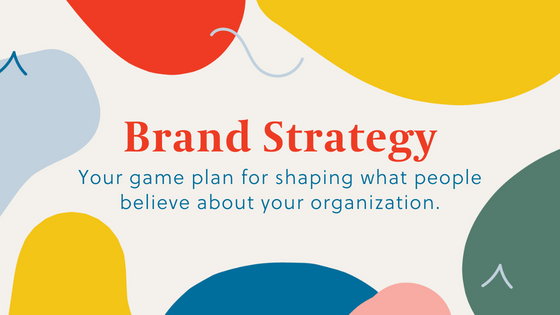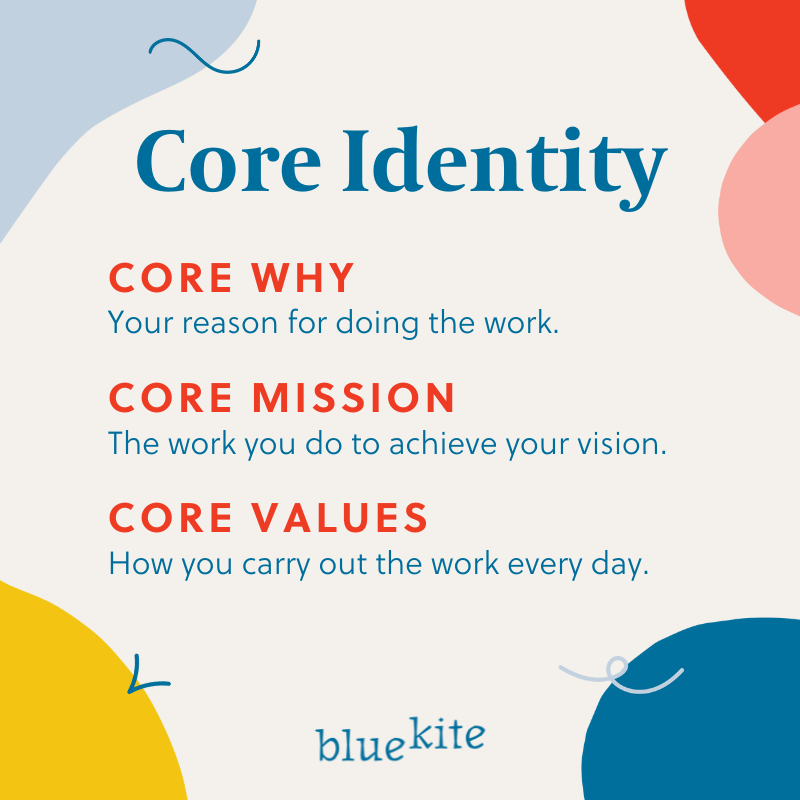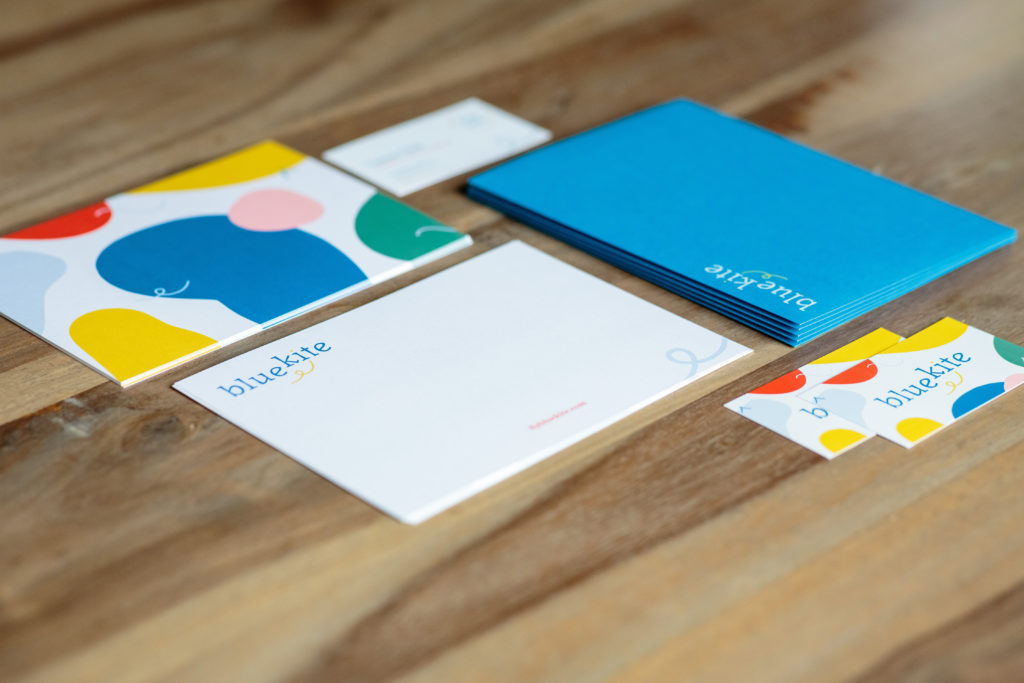Creating a strong brand is a lot like building a house. It starts with building a solid brand foundation, which should begin with brand strategy.
Your brand strategy is the foundation in which all of your branding and marketing efforts are built. Without taking the time to build a brand strategy, the foundation of all of your branding efforts will fall flat.
Without taking the time to build a brand strategy, the foundation of all of your branding efforts will fall flat.
For instance, if you’re having trouble getting traction with your marketing efforts or you’re attracting the wrong kinds of customers, you may have a weak brand that lacks strategic focus.
That’s why it pays to build a strong brand foundation before spending time and money marketing your organization.
But just to be clear——branding isn’t just your logo. It’s what makes you different than every other company out there. Ultimately, it’s the promise you make to customers.
That’s why your brand strategy should be the foundation of everything you do.
The problem is most businesses skip this important step. They want to get right to the part sexy stuff — like creating marketing campaigns or engaging in the tactical aspects of promoting your business.
But without a strong brand foundation, your marketing efforts will surely crumble.
Elements of a Strong Brand Foundation
So, how do you build a strong brand foundation?
There are five key ingredients you need for building a solid brand foundation.
1. Strong core identity.
At the heart of every successful brand, is a strong core identity. In other words, you have to know who you are as a business before you can communicate that to the world––both in your visuals and your words.
Honing your core identity is the first step in our brand strategy process at Blue Kite.
Your core identity includes the following three elements:
- Core Why: This is the reason your company exists. It’s WHY you started your company and articulates the vision you are trying to accomplish.
- Core Mission: Your mission is WHAT you do every day to make your vision possible.
- Core Values: Your core values articulates HOW you and your team show up to do the work. It’s the posture, beliefs and attitudes you have around your work.
Oftentimes, companies forget why they started. Or, what is listed as the mission and values statement doesn’t accurately reflect where the company is heading.
It’s important to reevaluate these regularly to make sure they reflect the direction of the business and how you serve customers. If there is not alignment here, the rest of your brand development efforts will be off. That’s why you must solidify your core identity first.
How to solidify your core identity
Here are some questions to answer to help you solidify your core identity:
1. WHY DOES YOUR COMPANY EXIST?
In other words, what change do you want to see in the world? Why did you start your organization?
The answer to these questions can help you identify what we call your Core Why. Defining a powerful Core Why can help you narrow your focus and help you determine what you stand for as an organization.
2. WHAT IS YOUR MISSION AS A COMPANY?
In other words, what core problem do you solve for your customers? What do work do you need to do to accomplish your vision or Core Why?
Yes, your products and services will play a role in this. But, that’s not your mission. I encourage you to think bigger.
What goals are you trying to reach as an organization? What is your entire team aligned behind?
Here are some great examples of mission statements to inspire your thinking.
3. WHAT DO YOU VALUE AS A COMPANY?
Your core values demonstrate what you stand for as a company.
Perhaps you place a priority on responsiveness or perhaps you care strongly about empathy for customers and co-workers. Your values can be a huge differentiator and reason why customers and employees choose your business.
Here are some questions to help your thinking on this:
- How do you want to your team to show up every day?
- What strongly held beliefs do your team members share?
- What are behaviors that you will not tolerate?
- What do you believe or value above all else?
If you haven’t articulated core values for your business, it could be one of the most powerful things you do as a company.
2. Brand messaging.
The next step to building a strong brand is to solidify your key messages. These messages communicate who you are and what you do as a company. We call this brand messaging.
It’s important to build strong, consistent messaging so prospective customers immediately understand what you’re about as a company and why they should buy from you.
When done well, your key messages will communicate what makes you different from competitors and showcase the top benefits for choosing your brand.
How to determine your brand’s core messaging
Here are some questions to help you think through the core messages for your brand:
1. WHAT MAKES YOU DIFFERENT?
What is something that only your company does? Or, what is something that you do better than all of your competitors?
Understanding what makes your organization unique will help you stand out in a sea of competitors.
2. WHAT IS YOUR COMPANY’S STORY?
Every brand has a story. What is yours?
This could be the story of how your company got started or why you exist. People identify with stories. Crafting your story is a powerful way to communicate what your company is about.
3. WHAT IS THE PERSONALITY OF YOUR BUSINESS?
In addition to what your messages say, think about how you want to say them.
Are you professional and serious or laid back and fun? Do you see your brand as a helpful, polished concierge or a hip bartender with the inside scoop?
Giving your brand a personality will help you find your company’s voice and hone in on your messaging.
Once you’ve answered these questions, hone them into three or four key messages that you will weave into everything you communicate as a company.
Consider a headline or tagline
You also might want to consider developing a tagline or headline — a short, snappy statement that communicates the spirit of your brand.
For instance, our tagline is “elevate your brand, reach new heights”, which communicates our aspirational persona and brand promise of helping businesses succeed.
Although a tagline isn’t completely necessary, it can be an effective way to succinctly communicate your brand’s message — if you do it right.
3. Cohesive brand identity (or logo).
Once you’ve developed your brand’s message, you must establish the visual identity for your brand. This is your company’s logo, which is the visual representation of your brand.
It’s important that your logo and visual branding effectively communicates your company’s key messages. The design, colors and font choice all play a key role in communicating who you are as a company.
What do you want your logo to say about your company?
For instance, using vintage typography can communicate that you are a time-trusted brand. Or, choosing bright, vibrant colors evokes optimism, cheerfulness and excitement.
To get a better understanding of this, you can check out the rationale and methodology from our own rebranding here.
Considerations When Designing Your Brand Identity
- Does this visually represent who we are as a company How does it make people feel when viewing it? And is that what we want people to experience?
- How does our logo look at different sizes? Will it reproduce well when scaled down to a social media avatar or blown up on a billboard?
- Will this logo still look good a few years from now? In other words, will this logo stand the test of time?
Once you’ve solidified your visual branding, it’s important to keep it consistent.
Establishing brand style guidelines will help ensure your logo is used appropriately and not altered for various uses.
After all, a logo is a visual cue to help people remember your company. Using it consistently will improve the recall of your brand and make sure your company is always portrayed the right way.
>>Download our free brand implementation checklist to ensure your brand is consistent.<<
4. A solid home base.
In addition to nailing down your messaging and logo, you should build a digital “home base” for your company online. This should be a website that you own — not a Facebook page or a blog.
After all, your website is your digital storefront for your company. It’s important that you’re not renting space on someone else’s platform.
In today’s world, there are few companies that don’t need a solid website. Make sure your website delivers your brand promise, visually represents your brand and communicates what you’re about.
And if you want your website to drive leads and sales (and who doesn’t?), here are some of the most important elements your website should include.
5. Company-wide integration.
Once you’ve taken the time to build your brand’s foundation, then you should integrate that into everything you do as a company. Branding should influence how your team answers the phone, the way your products are packaged and even how your office is designed.
Think through how your company can live the brand each and every day. Make sure your people, products and service reflect the overall brand message.
After all, everything is marketing in today’s digital world.
Build a Solid Brand Foundation Before Marketing
After you’ve done all this, you can focus on implementing your marketing efforts and determining where best to distribute your message (i.e. advertising, social media, email marketing, etc.)
If you skip this foundational brand development work, your marketing efforts won’t be nearly as fruitful.
Looking for help to build a strong brand foundation for your business?
We’d love to help. Drop us a line to start the conversation to see if we’re a good fit to work together.
This post was originally published on October 7, 2016. It was updated in on September 15, 2019. It was further expanded and updated on June 27, 2022.






3 replies on “5 Key Components of a Solid Brand Foundation”
Worth my search👏
Perfectly Crafted
You shared a very nice piece of information, Thanks for sharing this!